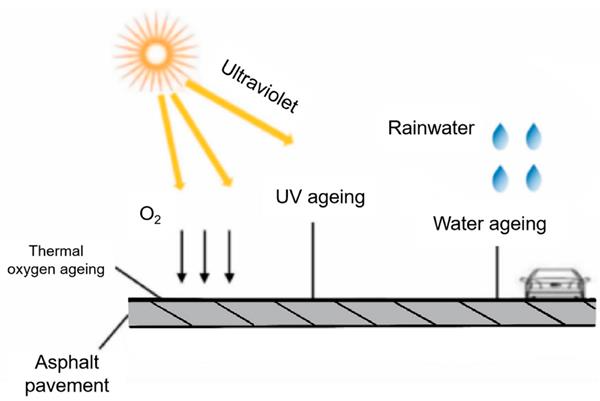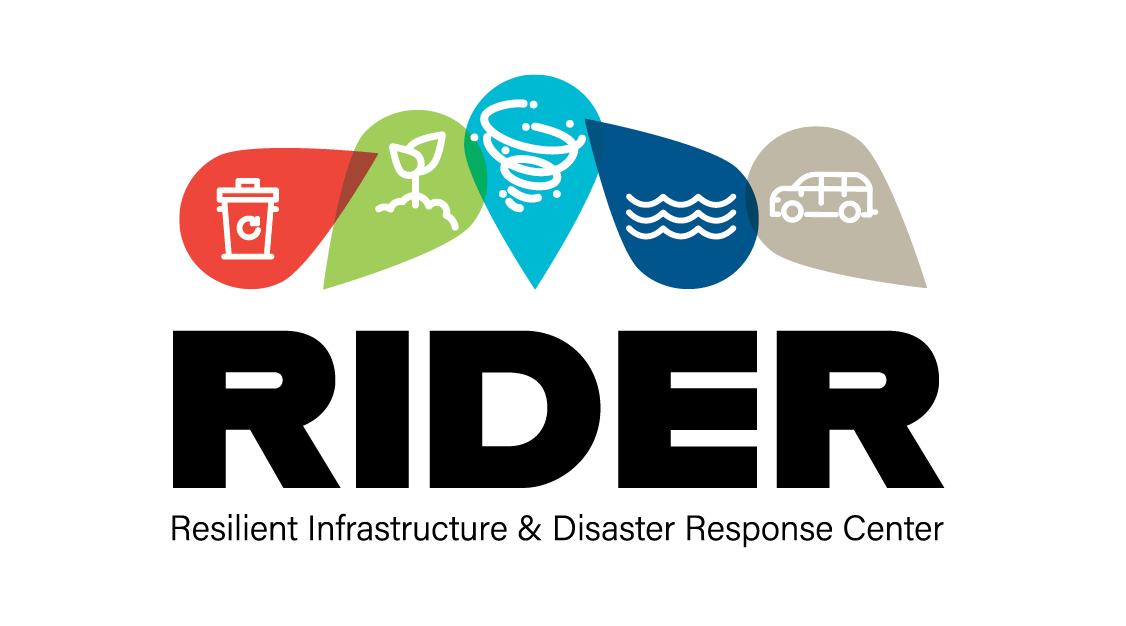RESEARCH EXPERIENCES FOR UNDERGRADUETS IN RESILIENCE AGAINST EXTREME WEATHER EVENTS
RESEARCH TOPICS
Addressing Data Equity in the Analysis of Future Transportation Systems
Faculty Mentor: Dr. Ren Moses
The way we collect and analyze transportation data is evolving rapidly. While traditional data sources like census surveys, in-pavement sensors, and microsimulation have served us well, new technologies are opening doors to innovative approaches. Modern sensing, GPS, and cellular communications enable real-time tracking of vehicles, buses, and even pedestrians, while platforms like WAZE help detect incidents and keep travelers informed. This is extremely important during disasters.
But as we embrace these advancements, we must also address a crucial question: Who is being left behind? Inequities persist in data quality and availability across different regions and communities. There is often a gap between rural and urban areas, affluent and economically challenged communities, and motorized versus non-motorized traffic.
This research aims to redefine data equity and tackle these disparities head-on by evaluating data quality issues to ensure fair and inclusive transportation systems for all.
Converting Disaster Debris to Sustainable Concrete
Faculty Mentor: Dr. Qian Zhang
Natural disasters, such as hurricanes, can generate massive amounts of waste and debris that must be quickly managed to prevent health risks and fire hazards. Much of this debris consists of biomass like vegetation and wood from damaged structures. Our project aims to turn this challenge into an opportunity by developing a process to convert disaster debris into value-added materials including biochar, and nanocellulose. These materials will then be used as additives in concrete, significantly improving the performance and durability of concrete, making it more sustainable and resilient.
As a UGR, you will be actively involved in hands-on research that includes:
- Characterizing debris samples collected from disaster sites.
- Developing an optimized process to convert debris into biochar and nanocellulose.
- Analyzing the produced product for use in sustainable concrete applications.
This experience will provide you with valuable skills in material characterization, processing, and sustainable engineering practices.
Building Resilient Cities: Green Infrastructure Solutions for Flood Mitigation
Faculty Mentor: Dr. Nasrin Alamdari
This REU project focuses on improving urban resilience to extreme weather, especially flooding caused by heavy rainfall. We aim to explore how GI strategies—such as permeable pavements, bioretention systems, and green roofs—can mitigate stormwater runoff, lower flood risks, and safeguard critical infrastructure. Through a combination of hydrological modeling and community-based research, we'll assess the effectiveness of various GI systems in enhancing flood resilience while addressing the unique needs of vulnerable communities.
As a UGR, you'll play a key role in:
- Collecting and analyzing hydrological data from flood-prone urban areas.
- Using modeling tools like PCSWMM to simulate the performance of GI systems in reducing stormwater runoff during extreme weather events.
- Evaluating the benefits of different GI interventions, focusing on flood mitigation, water quality improvement, and cost-effectiveness.
This hands-on research experience will help you develop valuable skills in hydrological modeling, data analysis, and sustainable urban design.
Fusing physics-based machine learning and topology optimization to enhance the performance of roof systems subject to extreme hurricane winds
Faculty mentor: Dr. Pedro L. Fernández-Cabán
This REU research project aims to enhance the wind performance of low-rise residential buildings by optimizing roof geometries. While some hurricane damage is due to poor construction practices, other losses stem from using traditional roof designs (e.g., gable, hip) without fully understanding their wind resilience. By combining computational fluid dynamics (CFD), physics-based machine learning (ML), and advanced optimization algorithms, our project will identify near-optimal roof configurations that reduce wind-induced structural loads while meeting practical design constraints like constructability and cost.
As a UGR, you'll gain hands-on experience with high-performance computing and be involved in:
- Running large eddy simulation (LES) experiments and topology optimization using GPU resources at the Texas Advanced Computing Center (TACC).
- Executing and troubleshooting OpenFOAM and MATLAB scripts, and managing HPC cluster jobs.
- Designing numerical experiments, tuning ML algorithms, and optimizing roof designs.
- Analyzing results and sharing them through the DesignSafe-CI data repository.
This project will help you develop valuable technical skills in CFD, ML, and optimization, while also enhancing your experience with cutting-edge simulation tools and data management.
Mitigating Extreme Heat in Urban Buildings
Faculty Mentor: Dr. Sungmoon Jung
Extreme heat events pose significant risks to human health and well-being, contributing to excess mortality worldwide. This research aims to investigate how wind can help mitigate extreme heat in urban buildings. You will begin by developing a computer model of a residential house to analyze its response during an extreme heat event. The study will then explore how varying wind speed and direction can impact heat mitigation strategies, alongside innovative ideas you may propose. If time allows, we will also examine how the location of the house within a city, such as Miami, influences wind patterns and their effect on heat reduction.
Assessing Roadway Pavement Conditions Using Aerial Images
Faculty Mentor: Dr. Eren Ozguven
Roadway conditions have a significant impact on transportation safety and efficiency, especially during post-disaster stage. Traditional road inspection methods are often labor-intensive, costly, and time-consuming. However, with advancements in aerial imagery, we have a unique opportunity to automate and enhance roadway condition assessments. This project aims to develop an automated system for detecting and mapping roadway defects using satellite or aerial imagery combined with advanced image processing and object detection techniques.
Students will be involved in:
- Collecting aerial imagery from open-source aerial imagery platforms.
- Processing the imagery to identify road damage.
- Creating a GIS-based map to visualize the severity of road conditions.
By leveraging this technology, transportation agencies can prioritize maintenance operations, enhance road safety, and improve overall efficiency in managing transportation networks after disasters.
Exploring Compound Coastal Floods Under Climate Change
Faculty Mentor: Dr. Ebrahim Ahmadisharaf
This research aims to explore the space-time structure of compound coastal floods, specifically the interaction between precipitation and storm surge, under climate change. In this project, we will develop a predictive framework that integrates these two critical factors for joint statistical analyses. Our investigation will be conducted in selected locations across the US Gulf of Mexico, an area historically impacted by significant floods, including Hurricanes Katrina, Michael, Sally, and Helene. By analyzing current and projected precipitation and storm surge data from existing climate models, we aim to understand future compound flood risks to coastal areas.
As a UGR, you will play a key role in:
- Conducting joint statistical analyses of precipitation and storm surge data.
- Creating a bias-corrected database of historical and future storm surge-precipitation data for the Gulf of Mexico region.
- Characterizing compound storm surge-precipitation events and comparing historical with future events.
Additionally, you will develop presentations and posters to share your findings at prestigious scientific conferences such as the EWRI, AGU Fall Meeting, AMS Annual Meeting, and Natural Hazards Research Summit.
Assessing Advantages of Conversion Construction and Its Potential for Sustainable Infrastructure Development in the Wake of Disruptive Events
Faculty Mentor: Dr. Maxim A. Dulebenets
With the rise of commercial and residential development, examining sustainable construction practices is essential. Traditional demolition, while historically necessary, is costly and environmentally harmful, generating debris and releasing pollutants like asbestos, lead, and mercury, which threaten air quality and public health. Moreover, demolition delays projects and contributes to greenhouse gas emissions, impacting climate and habitat health. Disruptive events like hurricanes and earthquakes further complicate construction activities, adding delays and environmental costs. A sustainable alternative is conversion construction, especially residential-to-commercial conversion, which minimizes pollutants, reduces waste, and can be cost- and time-efficient. This project explores conversion methods, including modular techniques, for their potential to reduce environmental impact, adapt existing structures for new uses, and build resilient infrastructure under normal and disruptive conditions.
Optimization of a storm-generated vegetative debris management system for sustainability
Faculty mentor: Dr. Juyeong Choi
Our research project aims to develop a simulation-based optimization model that focuses on the sustainable management of post-disaster debris. Inspired by real-world challenges faced during recovery efforts after Hurricanes Michael and Ian, students will work on creating a computer simulation model to investigate storm-generated debris management systems. Among the generative debris, handling vegetative debris presents a great challenge because of its enormous volume. Using simplified datasets collected from debris contractors, they will explore the dynamics of how vegetative debris is managed after storm events, learning to optimize operations such as debris hauling, temporary storage, and material recovery. Over the span of 10 weeks, students will learn to use agent-based modeling to simulate the interaction of individual agents such as debris, trucks, and recycling facilities within a complex system. The ultimate goal of this project is to empower students to devise strategies that maximize the reuse and recycling of debris while optimizing resources and minimizing collection time, all with a focus on sustainability and operational efficiency.
Enhancing Flood Resilience of Porous Pavements: Investigating Epoxy-Modified Asphalt Binders for Durability Under Extreme Weather Conditions
Faculty Mentor: Dr. Michael Elwardany

Flooding and extreme weather events pose significant challenges to transportation infrastructure, highlighting the need for durable and resilient pavement systems. This study focuses on the potential of Epoxy-Modified Asphalt (EMA) binders to enhance the performance of Open-Graded Friction Courses (OGFC) in porous pavements, which are valued for their ability to drain water and mitigate flooding impacts. A critical issue in OGFC durability is oxidative aging, exacerbated by UV exposure, which weakens the binder-aggregate adhesion and leads to raveling.
EMA technology, with its proven resistance to raveling in regions like New Zealand and the Netherlands, offers a promising solution. However, its broader application in flood-prone areas requires a comprehensive understanding of epoxy-binder interactions and resistance to photooxidation and thermal degradation. This study evaluates the chemistry and performance of eight base binders modified with varying levels of epoxy (0–25% by weight) using UV light simulation, Dynamic Shear Rheometer, and Fourier-Transform Infrared Spectroscopy. The outcomes aim to provide critical insights into designing sustainable EMA-based porous pavements capable of withstanding extreme weather events, reducing flooding risks, and improving infrastructure resilience in disaster-prone regions.



